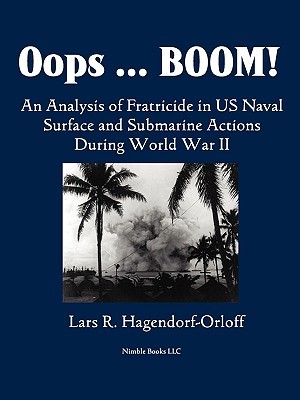
- We will send in 10–14 business days.
- Author: Lars P Hagendorf-Orloff
- Publisher: Nimble Books
- ISBN-10: 1608880249
- ISBN-13: 9781608880249
- Format: 21 x 27.9 x 0.5 cm, minkšti viršeliai
- Language: English
- SAVE -10% with code: EXTRA
Oops! Boom! An Analysis of Fratricide in US Naval Surface and Submarine Forces in World War II (e-book) (used book) | bookbook.eu
Reviews
Description
This study examines the significance of friendly fire in U.S. naval surface and submarine operations during World War II and argues that the occurrence of self-inflicted casualties is a function of the frequency and intensity of naval combat. Additionally, the causes and factors contributing to naval fratricide are identified and discussed to naval fratricide are identified and discussed using historical cases. The crucial result of this thesis is that even the most technologically advanced and highly trained force is subject to surprisingly high rates of friendly fire.
EXTRA 10 % discount with code: EXTRA
The promotion ends in 22d.15:41:19
The discount code is valid when purchasing from 10 €. Discounts do not stack.
- Author: Lars P Hagendorf-Orloff
- Publisher: Nimble Books
- ISBN-10: 1608880249
- ISBN-13: 9781608880249
- Format: 21 x 27.9 x 0.5 cm, minkšti viršeliai
- Language: English English
This study examines the significance of friendly fire in U.S. naval surface and submarine operations during World War II and argues that the occurrence of self-inflicted casualties is a function of the frequency and intensity of naval combat. Additionally, the causes and factors contributing to naval fratricide are identified and discussed to naval fratricide are identified and discussed using historical cases. The crucial result of this thesis is that even the most technologically advanced and highly trained force is subject to surprisingly high rates of friendly fire.


Reviews